Often confused and misunderstood, these two abnormal combustion phenomena are as different as night and day.
Although we often hear people describe what goes on inside the cylinders of an Otto-cycle engine as being an explosion – i.e., a violent, nearly-instantaneous event – it’s not. The air-fuel charge does not explode when ignited by the spark plugs, but rather burns in an orderly fashion, starting at the spark plugs and progressing across the combustion chamber until it is quenched upon reaching the cylinder walls and piston crown when air-fuel charge has been completely consumed and there’s nothing more to burn. The combustion event takes a significant period of time – roughly 6 milliseconds or 90° of crankshaft rotation, give or take.
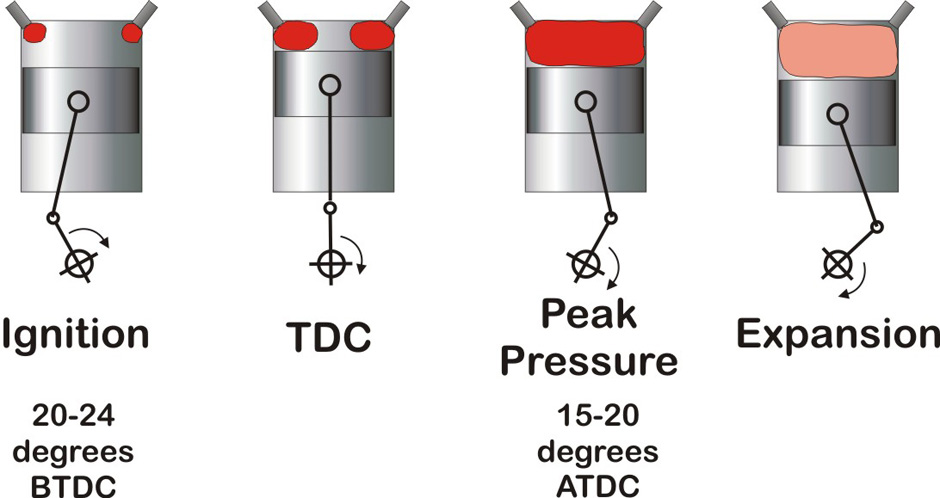
It’s crucial that peak pressure occur well past TDC, because the geometry of the crankshaft and connecting rod near TDC does not permit combustion pressure to be converted into useful work (i.e., crankshaft rotation), but simply generates excessive stress on the cylinder, piston, connecting rod and crankshaft. Figure 2 attempts to dramatize this point.
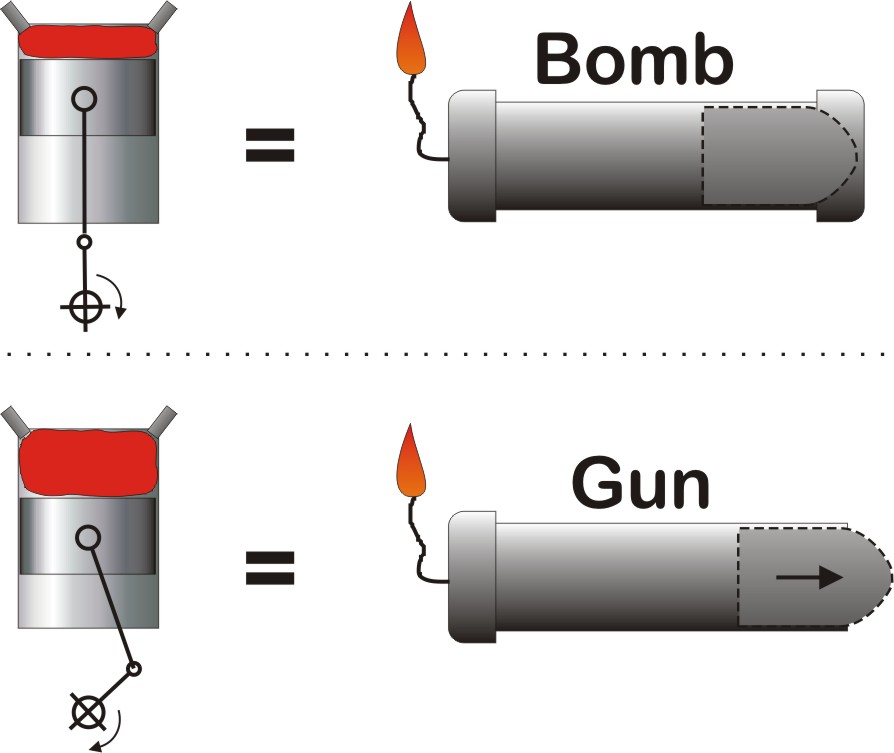
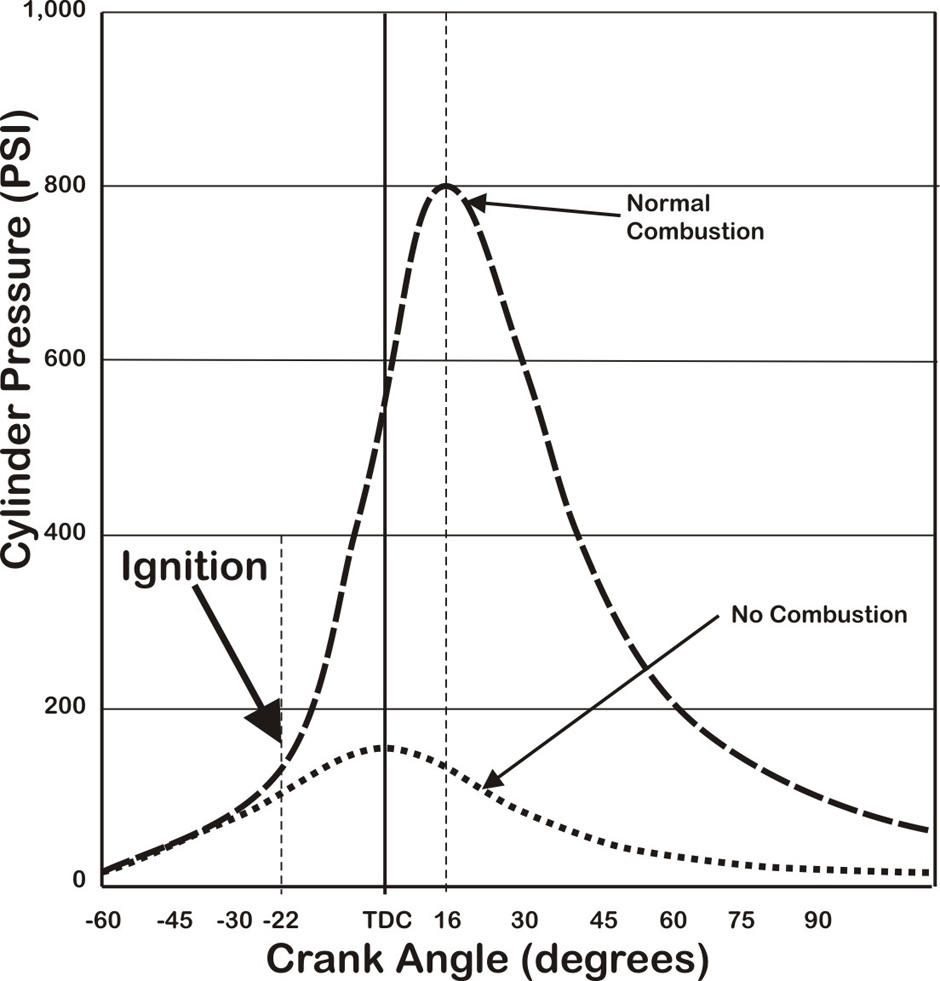
Detonation
But if the combustion process moves too fast and the pressure peak occurs too early, the result can be excessive pressure, excessive temperatures, and unstable pressure pulses known as “detonation.” That’s because when the piston is in the immediate vicinity of TDC, it can’t move downward in the cylinder to relieve the pressure (and accomplish some useful work in the process). The ragged, spiked appearance of the upper trace in Figure 4 is the characteristic pressure signature of detonation.
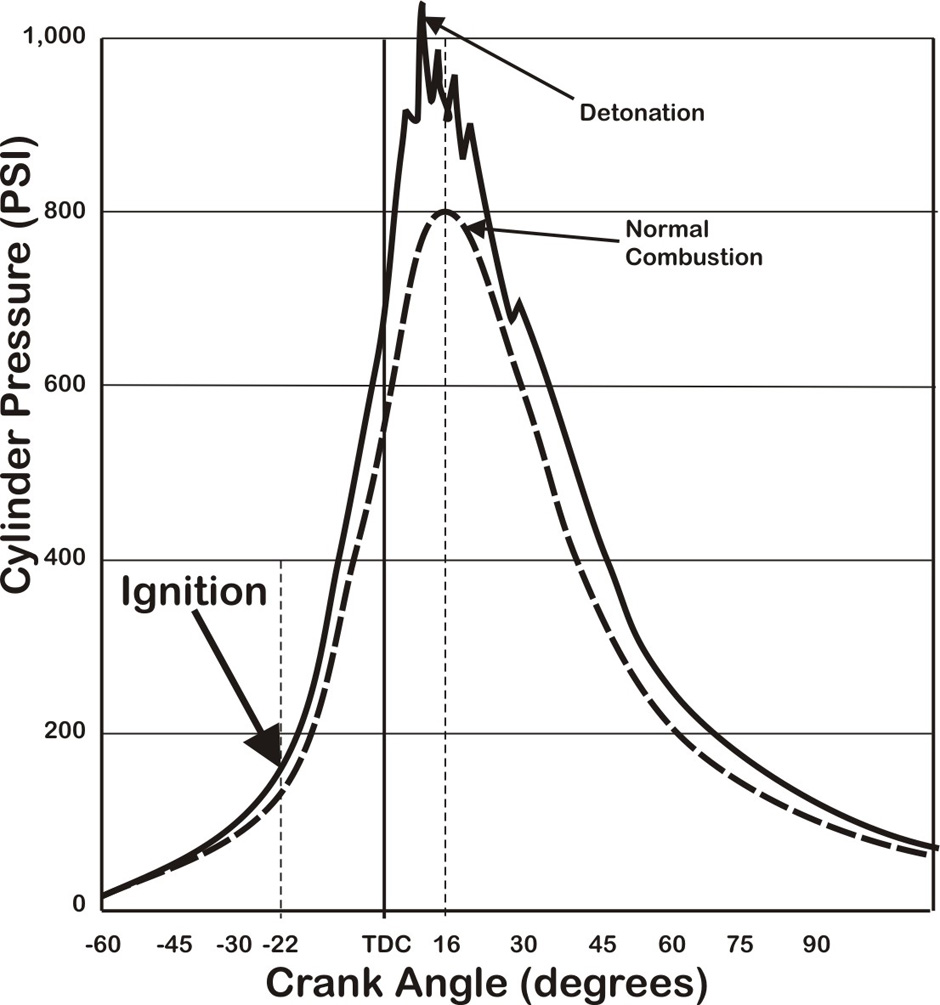
In an automobile, we can usually hear detonation in the form of audible “knock.” In an airplane, we can’t – there’s too much noise – but we can observe it on an engine monitor in the form of excessive CHT and depressed EGT.
Detonation is something that occurs near the peak pressure point in the combustion event, after the air-fuel charge has been ignited normally by the spark plugs. It is characterized by abnormal pressure spikes near the peak pressure point, caused by spontaneous combustion of end gas due to excessive temperature and pressure.
Contrary to what your CFI or A&P may have told you, detonation is not necessarily harmful. Many engines operate in light detonation quite regularly, and some can withstand moderate detonation for extended periods of time without damage. Detonation is not an optimum situation, but it’s not necessarily destructive. The higher the specific output of the engine, the more likely it is to sustain detonation damage. An engine that produces 0.5 hp/in3 (horsepower per cubic inch of displacement) – as is typical of most carburated aircraft engines – can usually sustain moderate levels of detonation without damage, but highly-boosted turbocharged engines rated at 0.625 hp/in3 or more can be damaged fairly quickly by detonation.
When detonation damage does occur, it typically manifests itself in the form of fractures (of spark plug electrodes and insulators, and sometimes piston rings and lands), pitting (typically of the piston crown), and/or heat distress (often piston skirt scuffing and piston corner melting).
As pilots, we can usually avoid such damage by being alert for the excessive CHT and depressed EGT that is characteristic of detonation, and reacting promptly by reducing power and going to full-rich mixture. An engine monitor is essential here – otherwise you cannot see the CHT of five of the six cylinders-and programming the CHT alarm to go off at 400° will help get your attention and take the appropriate action.
Pre-ignition
“Pre-ignition” is another abnormal combustion event that is often confused with detonation, but in fact is completely different. Pre-ignition is the ignition of the air-fuel charge prior to the spark plug firing. Anytime something causes the mixture in the chamber to ignite before the spark plugs fire, it is classified as pre-ignition. The ignition source can be an overheated spark plug tip, carbon or lead deposits in the combustion chamber, or (rarely) a burned exhaust valve-any of these things can act as a glow plug to ignite the charge prematurely.
Such a hot spot in the chamber can ignite the charge while the piston is very early in the compression stoke. The result: For a significant portion of the entire compression stroke, the engine is trying to compress a hot mass of expanding gas. This obviously puts tremendous mechanical stress on the engine and transfers a great deal heat into the aluminum piston crown and cylinder head. Substantial damage is almost inevitable.
Detonation causes a very rapid pressure spike near the peak pressure point for a very brief period of time. Pre-ignition causes tremendous pressure that is present for a very long time – possibly the entire compression stroke. Not only is pre-ignition far more damaging, but it’s also much harder to detect. In fact, typically you find out about it only after the engine has been damaged catastrophically.
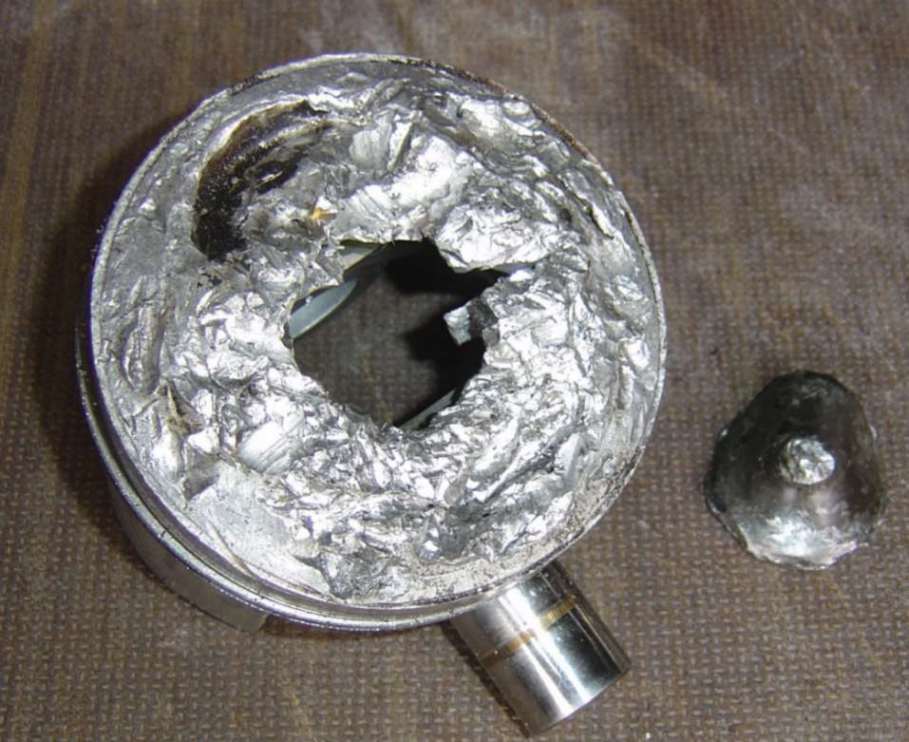
Engines can tolerate detonation for substantial periods of time, but there is no engine that can survive for very long when pre-ignition occurs. The engine will not run for more than a few seconds with pre-ignition. If you see a piston crown that looks sandblasted or a ring land that has fractured, it was probably caused by heavy detoation. If you see a hole melted in the middle of the piston crown, it was probably caused by pre-ignition. Other signs of pre-ignition are spark plugs with melted electrodes or insulators spattered with molten metal. Figure 5 shows an example of extreme damage caused by pre-ignition.
Detonation-induced pre-ignition
Although detonation and pre-ignition are two completely different phenomena, it is possible for heavy detonation to induce pre-ignition. If the engine is operating in heavy detonation for a significant period of time, the excessive temperatures and pressure spikes (which disturb the usual protective boundary layer) can cause spark plug electrodes and other things in the combustion chamber to overheat to the point where they start to glow red hot. At that point, the glowing item can cause pre-ignition and rapid destruction of the cylinder. Upon teardown, forensic analysis would reveal the tell-tale signs of both detonation and pre-ignition damage, although it’s the pre-ignition that ultimately did the engine in.
In a different article, we’ll look more closely at the normal combustion event, and explore how our use of the engine controls – throttle, mixture and prop – affect what happens inside the cylinder.